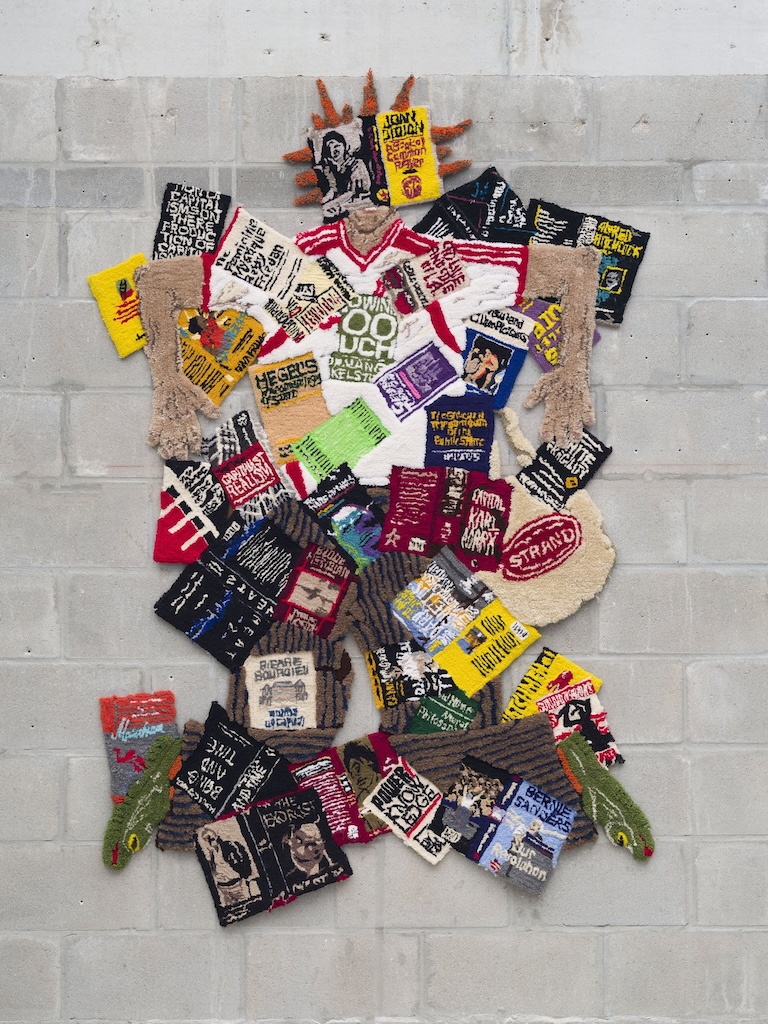
To receive Morning Links in your inbox every weekday, sign up for our Breakfast with ARTnews newsletter.
The Headlines
TRUMP PAUSES ALL FEDERAL LOANS AND GRANTS. On Monday, the White House budget office ordered a pause in all federal grants, loans, and other federal financial assistance, potentially paralyzing a large number of non-profit programs, including those of arts and cultural organizations, according to news reports. It was not immediately clear how and which programs would be affected, and the administration said the pause in billions of dollars of funding, for everything from disaster relief aid to education and transportation, was needed in order to assess which programs fit within Trump’s agenda. But others assert that the president doesn’t have the authority to block funds already allocated by Congress. “Congress approved these investments and they are not optional, they are the law,” said New York Democratic Senator Chuck Schumer.
ONE BILLION TO FIX THE LOUVRE? UNIONS REACT. Following warnings by the Louvre president Laurence des Cars about the museum’s concerning state of decay, various media are reporting on the estimated cost of its major renovations, from 500 million to 1 billion euros, including plans to build a separate display area for the Mona Lisa. That is in the ballpark of the 850 million euros ($887 million) it took to rebuild the fire-damaged Notre Dame de Paris cathedral, with the help of international donors. While French President Emmanuel Macron is expected to make an announcement today about what the budget-strapped government is planning to do, observers and union members are reportedly not pleased about the idea of spending hundreds of millions on the museum, as the country’s cultural institutions are being forced to cut spending, and the Louvre has reduced staff. Some have also alleged Des Cars has not maintained the Louvre properly, contributing to its current state of affairs. “We have leaks, floods, and electrical breakdowns everywhere,” a representative of the General Confederation of Labor (CGT) told The Art Newspaper, which also cited the higher, 1 billion euro estimate for renovations. “And the museum has suffered 200 job losses in the past ten years.” Elise Muller, head of the culture ministry branch of the Sud Solidarités union added that, “the museum actually has the money, but for the past three and a half years, Laurence des Cars’ team has chosen to reduce spending on the ten-year plan for the maintenance of the museum … She prefers to use public subsidies for glamour projects for a happy few.”
The Digest
Mega-gallery Pace is joining forces with Berlin’s Galerie Judin to launch a new joint gallery in a 1950s gas station in the German capital this spring. [ARTnews]
Several media have reviewed the New York Center for Jewish History’s exhibition featuring a full-scale replica of the Anne Frank House. The show opened yesterday, on International Holocaust Remembrance Day, but while many critics describe being moved by the exhibition, others have argued it commercializes Frank’s memory as “trauma tourism.” [The New York Times and The Telegraph]
The American private equity executive Steve Schwarzman is making waves in the London art market for snatching up a series of historic 18th-century British paintings at record prices. Since he is not exporting the artworks by leading portraitists Joshua Reynolds and Thomas Gainsborough, there seems to be little stopping the collector, who is busy restoring, and presumably decorating, a 17th century estate in Wiltshire, called Conhold Park, which he bought a few years ago for a cool £80 million ($100 million). [The Financial Times]
London arts center Somerset House is gearing up to celebrate its 25th anniversary with a host of events and projects slated for this year, as well as a new visual identity. New, free programming ranges from opening up the building to the public, to a new initiative to support emerging artists, called Talent 25, a courtyard commission from Turner-prize-winning artist Tai Shani, and an exhibition dedicated to choreographer Sir Wayne McGregor, to name a few. [Press release]
The Kicker
PAINTER CELIA PAUL’S WORLD. Writer Karl Ove Knausgaard reflects on the artist Celia Paul for The New Yorker, whose paintings have long interested him, “in their distinctive combination of weightlessness and heaviness.” Knausgaard was granted a rare invitation into Paul’s London flat and studio, where, born in 1959, she has lived since the 1980s. Readers are taken along as he rings the doorbell with sweating palms, and is eventually reassured by Paul’s kindness. A painter of her life, “I’m not a portrait painter,” Paul wrote. “If anything, I have always been an autobiographer.” That nevertheless includes painting many portraits, along with her homes and surroundings, London landmarks seen from her top-floor apartment, and her bedroom. “When I followed her into the flat … it was therefore a little like stepping into a painting,” Knausgaard writes. Though this real-life tableau is constantly changing, and at the time, Paul was beginning work on an incredible painting titled Colony of Ghosts. It wasinspired by a 1963 photograph showing Francis Bacon, Frank Auerbach, Michael Andrews, and Lucian Freud at a dinner table. Freud was her former partner of 10 years, and Paul described it in her autobiography as a “struggle from within.” “By writing about myself in my own words, I have made my life my own story,” she writes. “Lucian, particularly, is made part of my story rather than, as is usually the case, me being portrayed as part of his.” Knausgaard was duly invited back to look at Paul’s painting once it was done, which he does. And from March 14 to April 17, 2025, anyone who is able, can see it in her solo show at Victoria Miro Gallery in London.





